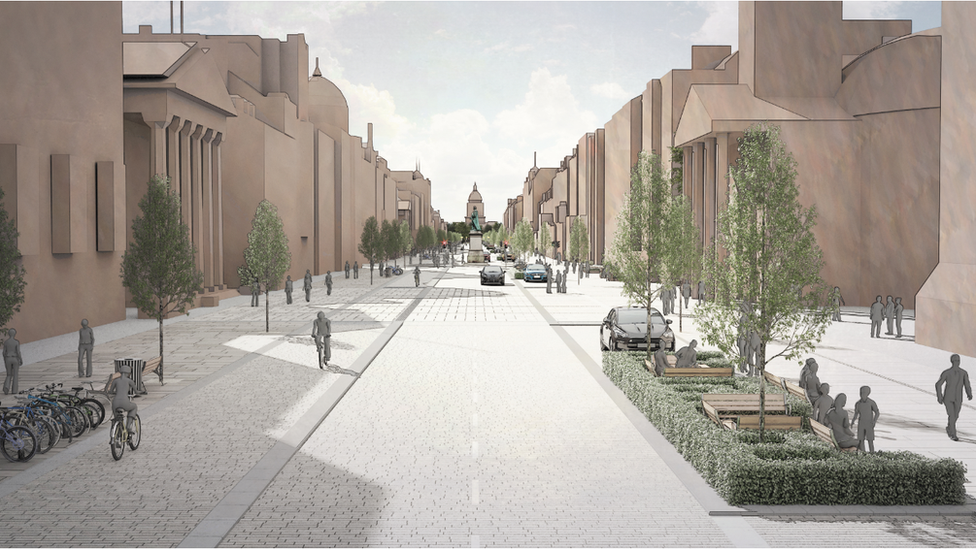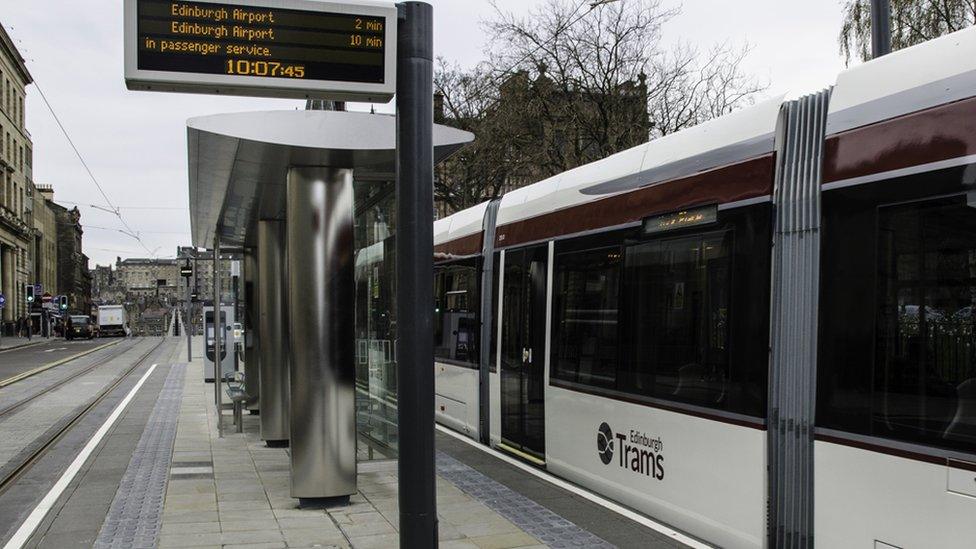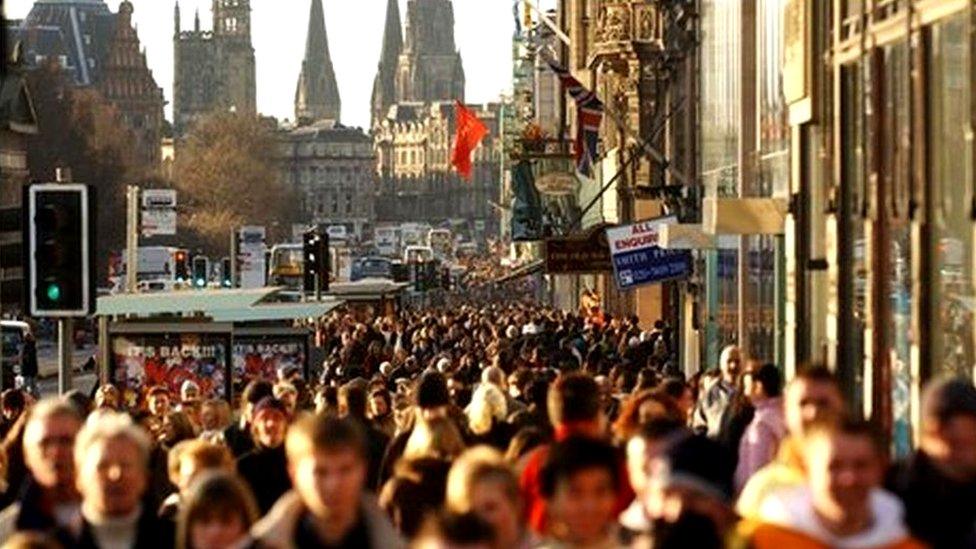Car ban and tram extension proposed in 10-year vision for Edinburgh
- Published

An artist's impression of how a pedestrianised George Street would look
Large parts of Edinburgh's city centre could be pedestrianised and the tramline extended under a radical 10-year vision for the capital.
City of Edinburgh Council has published its draft city mobility plan, external in a bid to become carbon neutral by 2030.
George Street would be shut to vehicles by 2025 and the tram network extended by the end of the decade.
The council said it planned to reinvest money raised by a workplace parking levy in improving public transport.
The final vision envisages widespread commuting by bike, integrated public transport and a largely car-free city centre.
George Street would be closed to traffic as well as parts of the Old Town including parts of the Royal Mile, Victoria Street and Cockburn Street.
A review of the city's bus network could involve halting vehicles from Princes Street by creating hubs at either end of the city centre.

The city's tram network could be extended
A "seamless" integrated ticketing system would allow passengers to use all modes of public transport, including the bike hire scheme.
Council leaders said they had drawn inspiration from cities such as Copenhagen, Sydney and Paris as well as UK-initiatives in Manchester and London.
If approved by the council's transport committee, an eight week public consultation will begin in February with finalised proposals expected later in the year.
Transforming Edinburgh - key milestones
2022
Tram route to Newhaven will be complete
A comprehensive review of bus routes in the city will have taken place
The Low Emissions Zone will be in place
2025
A comprehensive mass rapid transit plan for the city and region will be completed.
The business case for a north south tram line will be agreed, linking Granton to the Bio Quarter and beyond
A new bus strategy will be agreed, including stops, routes, and public transport interchanges.
George Street will be transformed
Air pollution levels will have been significantly reduced following the introduction of a low emission cordon around the city centre and the city boundary
Income from a workplace parking levy will have been invested in public transport.
2030
The mass transit network, including tram routes, will have been extended west to Newbridge - connecting the Waterfront to the Royal Infirmary
The city's seven park and rides will be upgraded
Arterial routes will be being used for "mass commuting by bike"
The city centre will be largely car-free
Iconic streets will be pedestrianised
seamless ticketing will allow passengers to move between different forms of transport.
'More liveable'
Council leader Adam McVey said: "We're already making great strides towards reducing carbon emissions in Edinburgh but, if we are to achieve our 2030 target, now is the time to be even bolder and more ambitious."
Deputy council leader Cammy Day said: "I think it's the right thing to do to make the city centre more liveable. It won't stop people from going to George Street."

Bus routes which currently use Princes Street could be altered
The consultation includes a proposal to introduce congestion charging "if necessary" but the council leader said the administration had no firm plans for such a measure..
Green councillor Gavin Corbett said: "There is a huge amount to welcome in the draft plan which could and should improve quality of life in the city in so many ways: tackling congestion, pollution, poor health, social isolation and road safety.
"As the examples within the plan from across the world show, there is only one credible direction for Edinburgh.
"The status quo simply leaves the city further behind as other cities take dramatic steps towards public transport and cycling and walking."